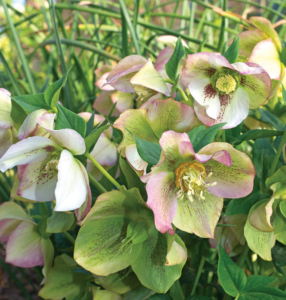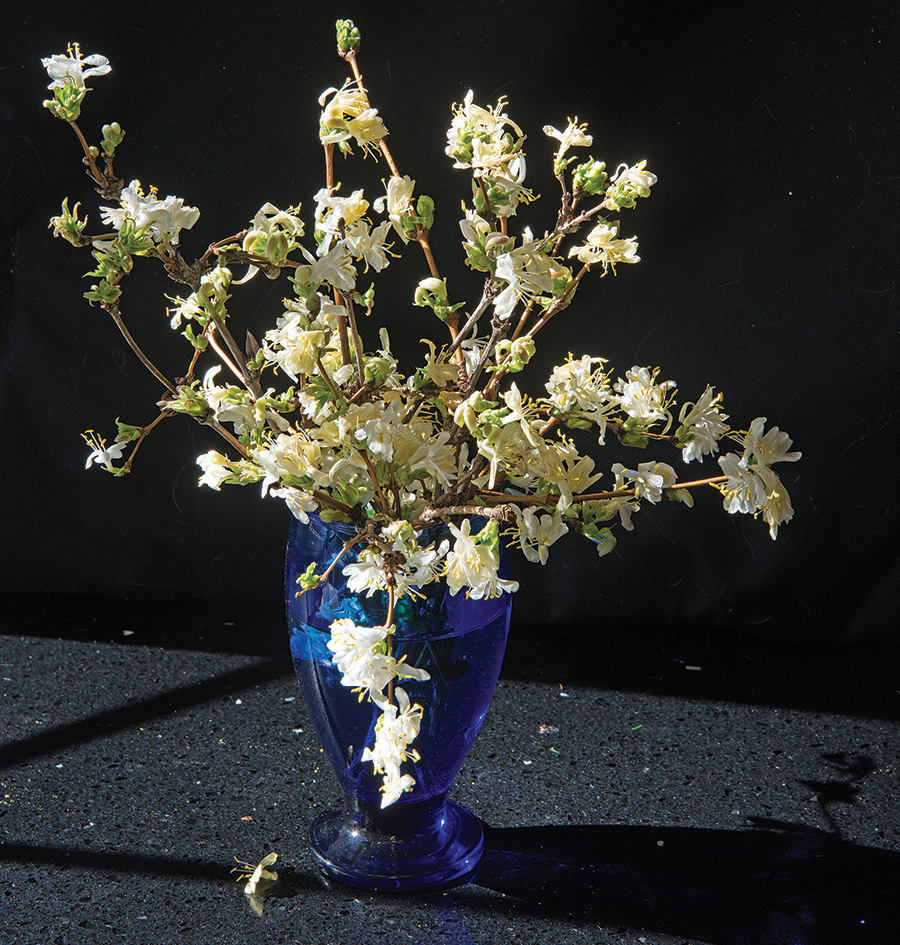In February
Experience an early spring with winter honeysuckle. Depending on the weather, the blooms on this fickle bush might begin to open as early as January or February and then persist into early spring.
The dainty, white flowers infuse the chilled winter landscape with a delicious, citrus-like smell.
This deer-resistant shrub grows best in sun to light shade. Planted in average garden soil, after becoming established, it tends to be quite drought-tolerant.
Prune right after flowering to subdue the shrub’s size and prevent small red berries — winter honeysuckle wannabes — from forming.
February 14th is not only the day to share sweets with your Valentine sweetie, but it is also time to give your fescue lawn a good tickle for the spring growing season with an application of one pound of nitrogen per 1000 feet of lawn.
If any motorized garden equipment still has gas left over from last autumn’s chores, replace it with a fresh refill to help prevent carburetor clog.
Pansies are champs at blooming in the winter, but if you pick their spent blossoms off now and water the plants monthly with a diluted fertilizer solution, they will carry their fancy flower show well into the spring.
In March
If your green thumb is itching to begin growing annual edibles, cool-season favorites such as lettuce, spinach, radishes, onions, kale, potatoes, turnips, mustard greens, cauliflower, broccoli and cabbage can all be planted in the vegetable patch this month.
Has your lawn mower blade been sharpened in the last two years? Remember: A sharp blade cuts; a dull blade tears, which makes grass more susceptible to diseases.
For more flower power in the coming summer, early this month, prune woody ornamentals such as abelia, buddleia, althea, crepe myrtle, pomegranate, clethera and vitex that develop blossoms off new growth.

Hellebores
Look for hellebores at local nurseries. These cold-hardy wonders readily produce displays of cute, cupped flowers during the waning of winter and continue blooming into the new spring.
Even after their blossoms have faded, hellebores maintain their handsome 12- to 18-inch-high clumps of evergreen foliage through the hottest months.
These are tough beauties, too. They are deer-resistant and can perform well even in areas of dry shade, where few other plants thrive. A happy hellebore can reseed and establish expanding green mounds of pretty plants.
Easy on the pruners! Not all trees and shrubs will benefit from a shearing this month. Wait to snip early-blooming beauties such as azalea, camellia (Camellia japonica), Carolina jessamine, forsythia, flowering quince, spirea, viburnum, mock orange, weigela and deciduous magnolia until after their flowers have faded.
Remove winter mulch from around roses and replace with a fresh organic covering for the warm-season growing period to come. A good one-two approach is to spread a layer of compost first and then cover it with shredded hardwood mulch.
Also rake out the protective winter mulch from hardy perennials and replace with fresh organic material, but be careful not to cover any new growth or basal leaves.
Celebrate the new spring with your feathered garden buddies by cleaning debris out of bird houses and giving the bird bath a good scrubbing.







